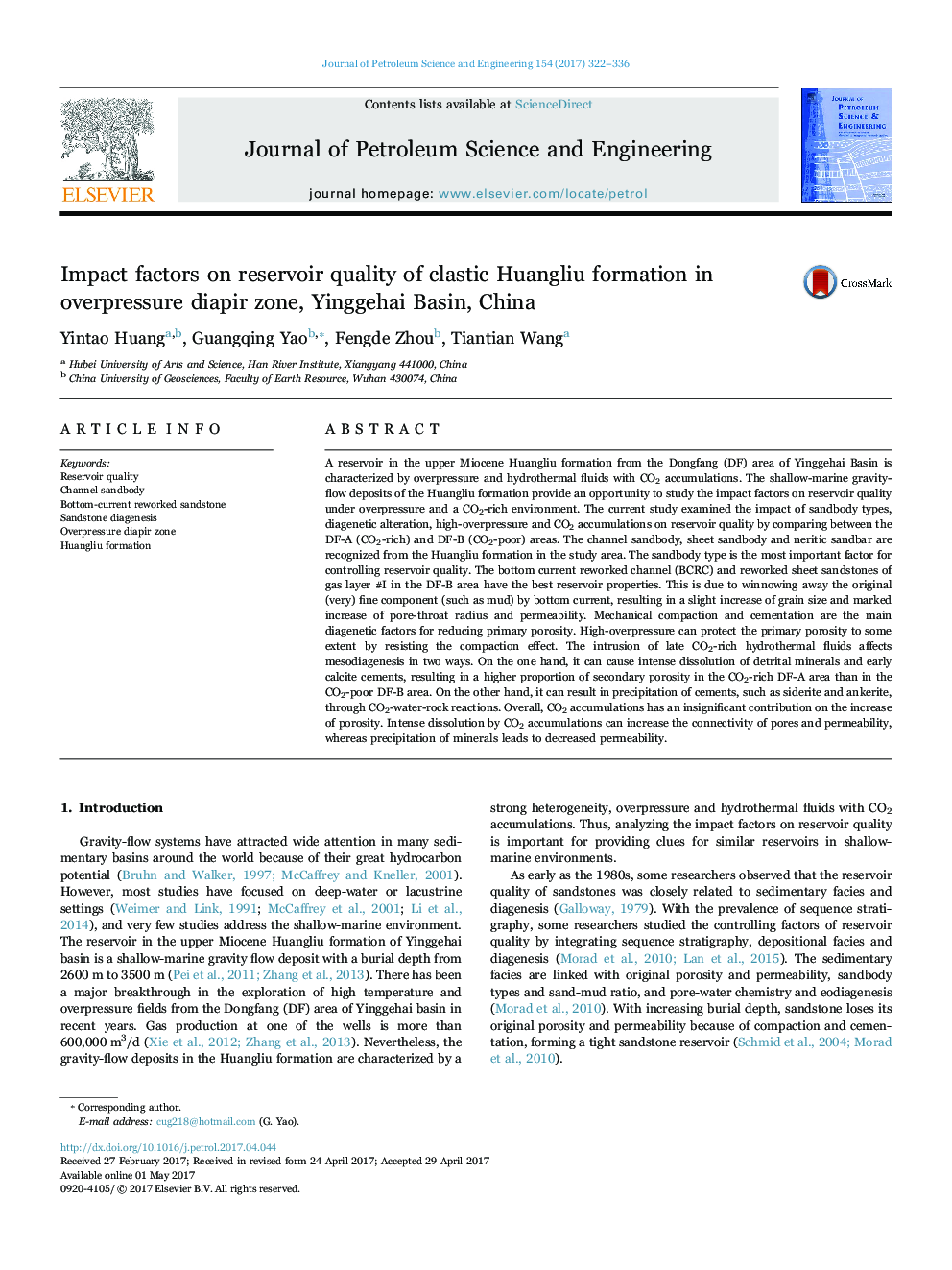| کد مقاله | کد نشریه | سال انتشار | مقاله انگلیسی | نسخه تمام متن |
|---|---|---|---|---|
| 5484217 | 1522787 | 2017 | 15 صفحه PDF | دانلود رایگان |
عنوان انگلیسی مقاله ISI
Impact factors on reservoir quality of clastic Huangliu formation in overpressure diapir zone, Yinggehai Basin, China
دانلود مقاله + سفارش ترجمه
دانلود مقاله ISI انگلیسی
رایگان برای ایرانیان
موضوعات مرتبط
مهندسی و علوم پایه
علوم زمین و سیارات
زمین شناسی اقتصادی
پیش نمایش صفحه اول مقاله

چکیده انگلیسی
A reservoir in the upper Miocene Huangliu formation from the Dongfang (DF) area of Yinggehai Basin is characterized by overpressure and hydrothermal fluids with CO2 accumulations. The shallow-marine gravity-flow deposits of the Huangliu formation provide an opportunity to study the impact factors on reservoir quality under overpressure and a CO2-rich environment. The current study examined the impact of sandbody types, diagenetic alteration, high-overpressure and CO2 accumulations on reservoir quality by comparing between the DF-A (CO2-rich) and DF-B (CO2-poor) areas. The channel sandbody, sheet sandbody and neritic sandbar are recognized from the Huangliu formation in the study area. The sandbody type is the most important factor for controlling reservoir quality. The bottom current reworked channel (BCRC) and reworked sheet sandstones of gas layer #I in the DF-B area have the best reservoir properties. This is due to winnowing away the original (very) fine component (such as mud) by bottom current, resulting in a slight increase of grain size and marked increase of pore-throat radius and permeability. Mechanical compaction and cementation are the main diagenetic factors for reducing primary porosity. High-overpressure can protect the primary porosity to some extent by resisting the compaction effect. The intrusion of late CO2-rich hydrothermal fluids affects mesodiagenesis in two ways. On the one hand, it can cause intense dissolution of detrital minerals and early calcite cements, resulting in a higher proportion of secondary porosity in the CO2-rich DF-A area than in the CO2-poor DF-B area. On the other hand, it can result in precipitation of cements, such as siderite and ankerite, through CO2-water-rock reactions. Overall, CO2 accumulations has an insignificant contribution on the increase of porosity. Intense dissolution by CO2 accumulations can increase the connectivity of pores and permeability, whereas precipitation of minerals leads to decreased permeability.
ناشر
Database: Elsevier - ScienceDirect (ساینس دایرکت)
Journal: Journal of Petroleum Science and Engineering - Volume 154, June 2017, Pages 322-336
Journal: Journal of Petroleum Science and Engineering - Volume 154, June 2017, Pages 322-336
نویسندگان
Yintao Huang, Guangqing Yao, Fengde Zhou, Tiantian Wang,